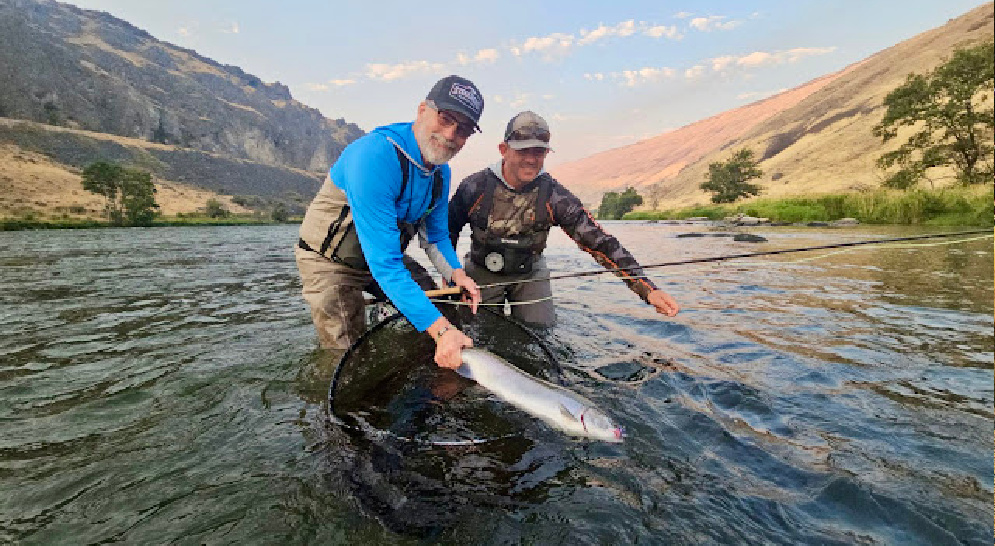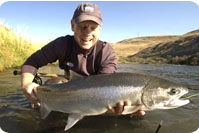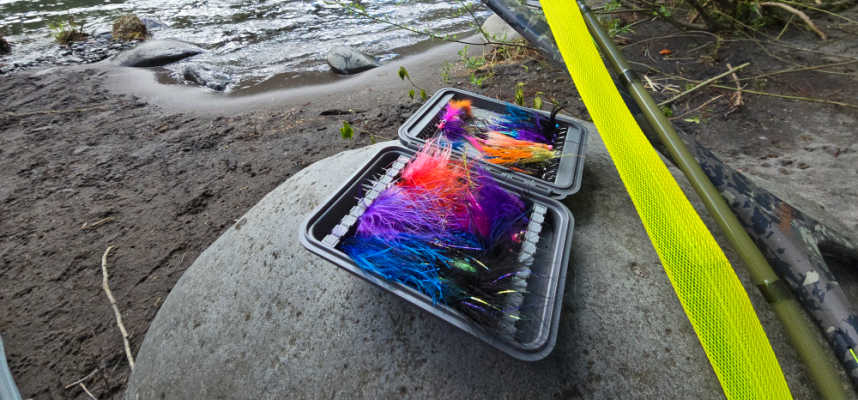A New Era of Steelhead Fly Fishing
|

John and Sam Sickles | Steelhead Outfitters | Deschutes River
The Spey Revolution: A New Era of Steelhead Fly Fishing
Spey casting has transformed the way we approach steelhead fishing. What was once a niche method for a small group of dedicated anglers has become a widely embraced technique across the Pacific Northwest and beyond. This shift hasnít just changed how we fish, itís changed how rods, lines, and flies are designed, how rivers are approached, and how anglers think about presentation and water coverage.
Why Spey?
The rise of two-handed rods isnít just about tradition or elegance, itís about efficiency and effectiveness. With a Spey setup, anglers can cover more water with less effort, especially on large steelhead rivers. Long casts, tight loops, and minimal backcasting space requirements make Spey rods ideal for navigating brushy banks or wading deep runs.
And letís be honest, thereís something incredibly satisfying about the rhythm and flow of a perfectly executed Spey cast. It feels less like chuck-and-duck and more like a dance with the river.
A Better Way to Fish
Hereís what the Spey revolution offers the modern steelheader:
- More Time Fishing: Spend less time false casting and more time swinging your fly in the strike zone.
- Better Water Coverage: Reach distant seams and far-off tailouts that were previously inaccessible with single-hand setups.
- Less Fatigue: Use the power of both hands and your body to cast. Less wear on your shoulder and more energy for the long days.
- Ideal for Sink Tips & Big Flies: Modern Skagit lines make throwing heavy tips and large intruders feel effortless.
The Right Gear Makes the Difference
With Speyís rise, the fly fishing industry has stepped up with specialized gear:
- Rods: Two-handers come in a variety of sizes and actions tailored for specific rivers and fishing styles, from smaller 5-6 wt switch rods to full-length 13-14 ft rods for big water.
- Lines: Skagit heads, Scandi heads, and integrated shooting heads let you fine-tune your setup. Add in interchangeable sink tips, and you can dial in your presentation with surgical precision.
- Flies: The Spey game brought a resurgence in traditional patterns and innovative designs like the Intruder, Hoh Bo Spey, and Moal Leech, all built to swim on the swing and trigger aggressive takes.
Itís Not Just for Big Rivers Anymore
While the Deschutes, Clearwater, and Skeena were early playgrounds for Spey anglers, today youíll find two-handers on almost every steelhead river. Smaller rivers benefit just as much, switch rods with Scandi lines are perfect for tight quarters and short swing runs. The technique adapts just as well to summer runs and small tributaries as it does to winter flows and glacier-fed giants.
Getting Started or Leveling Up?
If you're new to Spey casting, donít be intimidated. Modern gear is more forgiving than ever, and the learning curve is shorter than you might expect. With the right rod, balanced line, and a bit of instruction, most anglers find success (and joy) quickly.
And for experienced Spey anglers? The journey never ends. Whether you're experimenting with new line systems, learning advanced casts, or chasing that perfect swing speed. Thereís always something to refine and rediscover.
The Future of Steelhead Fishing
Spey casting is more than just a technique, itís a mindset. Itís about reading water differently, thinking in rhythm with the current, and slowing down to connect with the process. The rewards? A deeper appreciation for each cast, each grab, and each fish.
If you havenít stepped into the world of two-handed rods yet, now is the time. The gear is better. The rivers are ready. And the fish... Well, theyíve always been waiting.
- SHB
|
|
|




